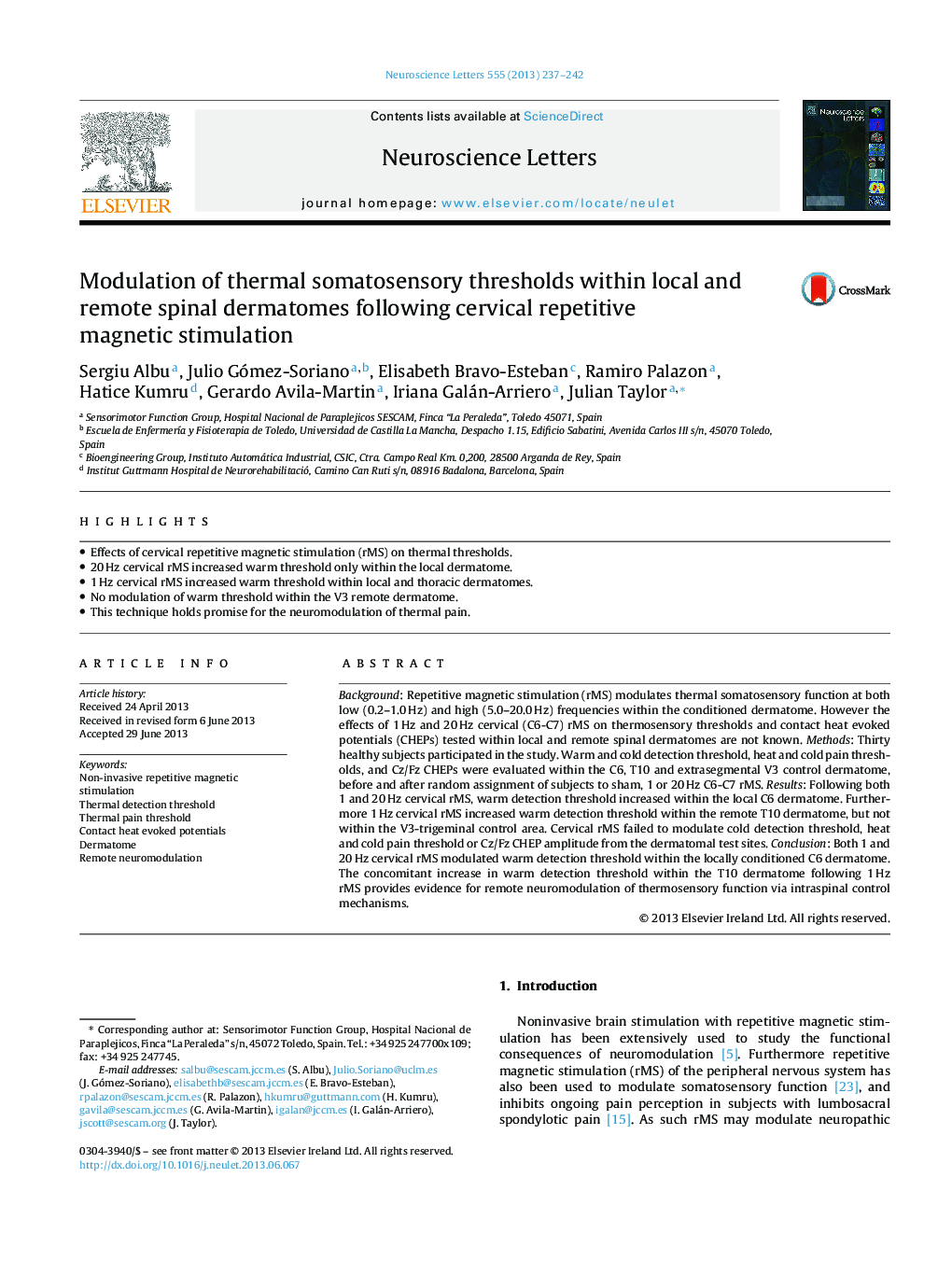| Article ID | Journal | Published Year | Pages | File Type |
|---|---|---|---|---|
| 4343939 | Neuroscience Letters | 2013 | 6 Pages |
•Effects of cervical repetitive magnetic stimulation (rMS) on thermal thresholds.•20 Hz cervical rMS increased warm threshold only within the local dermatome.•1 Hz cervical rMS increased warm threshold within local and thoracic dermatomes.•No modulation of warm threshold within the V3 remote dermatome.•This technique holds promise for the neuromodulation of thermal pain.
Background: Repetitive magnetic stimulation (rMS) modulates thermal somatosensory function at both low (0.2–1.0 Hz) and high (5.0–20.0 Hz) frequencies within the conditioned dermatome. However the effects of 1 Hz and 20 Hz cervical (C6-C7) rMS on thermosensory thresholds and contact heat evoked potentials (CHEPs) tested within local and remote spinal dermatomes are not known. Methods: Thirty healthy subjects participated in the study. Warm and cold detection threshold, heat and cold pain thresholds, and Cz/Fz CHEPs were evaluated within the C6, T10 and extrasegmental V3 control dermatome, before and after random assignment of subjects to sham, 1 or 20 Hz C6-C7 rMS. Results: Following both 1 and 20 Hz cervical rMS, warm detection threshold increased within the local C6 dermatome. Furthermore 1 Hz cervical rMS increased warm detection threshold within the remote T10 dermatome, but not within the V3-trigeminal control area. Cervical rMS failed to modulate cold detection threshold, heat and cold pain threshold or Cz/Fz CHEP amplitude from the dermatomal test sites. Conclusion: Both 1 and 20 Hz cervical rMS modulated warm detection threshold within the locally conditioned C6 dermatome. The concomitant increase in warm detection threshold within the T10 dermatome following 1 Hz rMS provides evidence for remote neuromodulation of thermosensory function via intraspinal control mechanisms.
